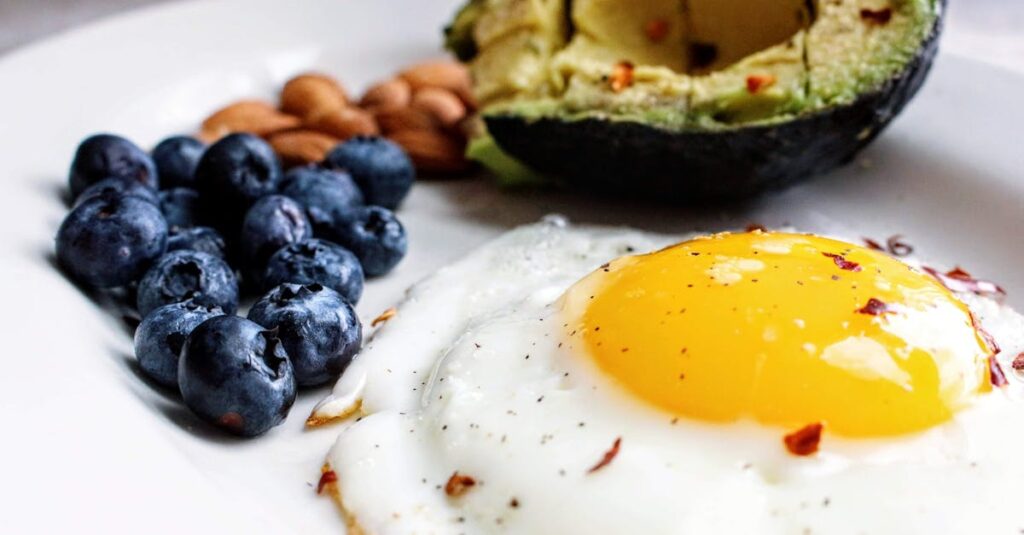Introduction
In an era dominated by smartphones, smartwatches, and screens constantly flashing notifications, it’s easy to forget that our bodies weren’t designed for all this tech. We’re living in a world that’s faster, more connected, and more convenience-driven than ever. But in the midst of all this digital noise, one ancient practice is making a comeback: the Paleo Diet. Could this old-school way of eating be the key to restoring balance in our modern, tech-heavy lives? Let’s find out.
What is the Paleo Diet?
The Paleo Diet, also known as the “caveman diet,” encourages eating foods that our Paleolithic ancestors would have consumed, think meat, fish, fruits, vegetables, nuts, and seeds. It’s based on the premise that our bodies are best adapted to the way our hunter-gatherer ancestors ate, long before agriculture, processed foods, and modern farming practices came into play.
But does this diet have a place in our tech-driven world? Could it be the antidote to the constant barrage of digital distractions, fast food, and sedentary lifestyles? Let’s take a closer look.
The Paleo Diet in the Tech Age: A Disconnect from Overload
It’s no secret that we’re living in the Age of Information. We’re constantly plugged in, whether it’s work emails, social media notifications, or binge-watching the latest series. This tech overload can leave us feeling drained, unfocused, and stressed out. Many of us are living on autopilot, grabbing fast food and snacks on the go to fuel our busy, tech-heavy days.
This is where the Paleo Diet might just be the perfect antidote. By cutting out processed foods and focusing on nutrient-dense, whole foods, the Paleo approach can help you disconnect from the convenience of tech-driven fast food, while reconnecting with real, wholesome nutrition.
Eating Whole Foods: A Simple Approach to Nutrition
In the age of Uber Eats and food delivery apps, eating can sometimes feel more like an afterthought, something to get out of the way in between meetings or while scrolling through social media. The Paleo Diet challenges this mindset. It forces you to slow down and think about what you’re putting into your body. Instead of processed foods and refined sugars, you’re eating whole, unprocessed foods that give your body the fuel it really needs.
Take Sarah, a 32-year-old marketing manager. Before adopting the Paleo Diet, Sarah relied heavily on energy drinks and quick snacks like chips or granola bars to keep her going throughout the day. But after switching to a Paleo routine, she noticed a huge difference in her energy levels. No more mid-afternoon crashes or reliance on caffeine. She now enjoys meals like grilled chicken with vegetables, a salad with avocado, and almond butter with apples, foods that nourish her body instead of spiking her blood sugar.
Reducing Inflammation: A Digital Detox for Your Body
Tech overload isn’t just mental; it can also take a toll on our bodies. Research has shown that constant screen time can lead to physical discomfort, like eye strain, headaches, and even poor posture. Add to that the inflammation caused by processed foods and poor nutrition, and you’ve got a recipe for fatigue and discomfort.
The Paleo Diet has been linked to reduced inflammation in the body. By eliminating processed sugars, refined carbohydrates, and other inflammatory foods, many people report feeling less bloated, more focused, and experiencing fewer aches and pains. This is particularly relevant in the tech age, where many of us spend hours sitting at desks, hunched over screens, and ignoring the signals our bodies send us.
For example, Jake, a 27-year-old software engineer, used to suffer from chronic neck pain and low energy due to long hours at his desk. After adopting the Paleo Diet, he noticed that not only did his neck pain improve, but his overall mood and focus also became sharper. Cutting out the processed foods and incorporating more anti-inflammatory ingredients like omega-3-rich fish, leafy greens, and nuts helped him feel less stiff and more alert throughout the day.
The Tech-Paleo Balance: Making It Work in a Busy World
The Paleo Diet sounds appealing, but the challenge lies in making it work in our fast-paced, tech-heavy lives. Convenience is king, and finding time to shop, prep, and cook can feel like a daunting task, especially when you’re juggling a hectic work schedule. But it’s not impossible. With a little planning and some smart tech-assisted tools, you can easily integrate the Paleo Diet into your daily routine.
Consider using meal prep apps or online grocery services to streamline the process. You can use your smartphone to plan your meals, create shopping lists, and even have all the ingredients delivered to your doorstep. There’s no need to feel overwhelmed by the thought of cooking from scratch every night, make the most of the technology at your disposal to simplify the process.
In fact, there are even Paleo-friendly meal delivery services that take the guesswork out of the equation. So, if you don’t have time to cook but still want to stick to a whole-foods diet, these services can help you stay on track without the added stress.
Conclusion: Finding Balance in a Tech-Focused World
The Paleo Diet offers a powerful way to disconnect from the overconsumption of processed foods and reconnect with a simpler, more wholesome way of eating. It’s not about rejecting technology entirely, it’s about using it to enhance your life rather than overwhelm it. By making conscious choices about what you eat and how you spend your time, you can find a balance that works for you.
If you’re feeling overwhelmed by the digital age and looking for a way to reset your body and mind, the Paleo Diet might just be the solution. It’s a way to eat more mindfully, reduce inflammation, and fuel your body with the nutrients it needs to thrive. And if you’re not sure where to start? Take it one meal at a time. A small change today could lead to big results tomorrow.

